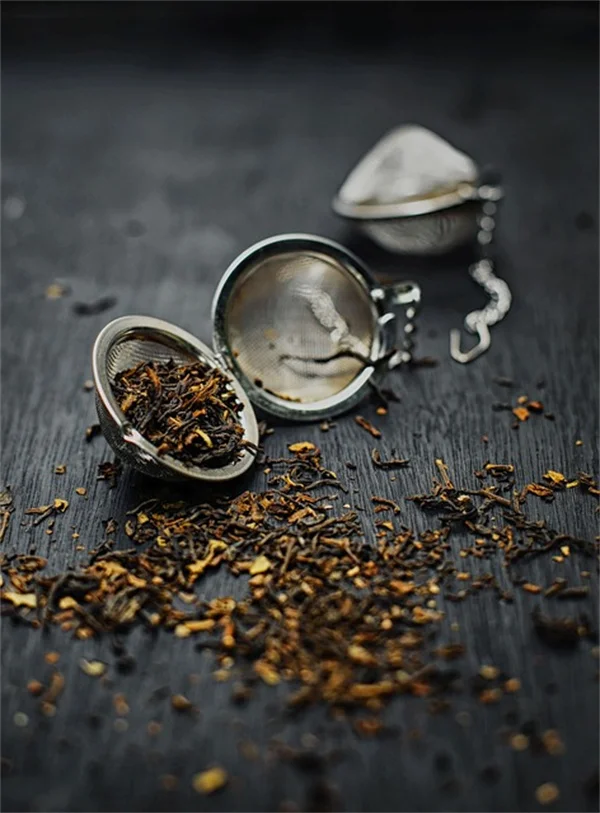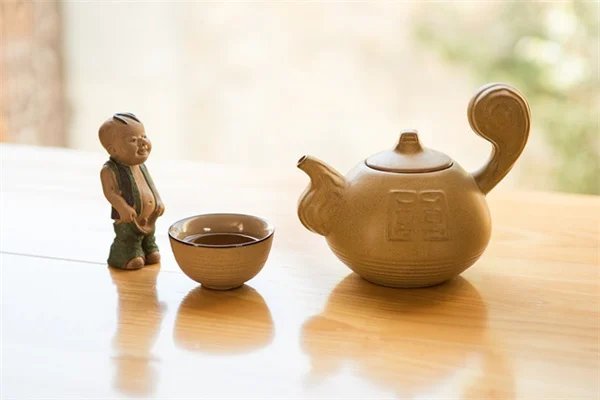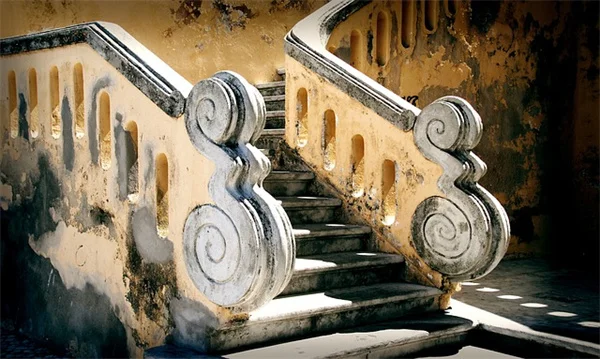Can a healthy 39-year-old teacher have a stroke in her sleep? The shocking answer is yes - and Krista Figari's story proves it. When this active educator suddenly lost function in her left side while making her bed, she became one of the 20% of stroke patients who experience wake-up strokes. Here's the wake-up call we all need: strokes don't discriminate by age, and knowing the signs (like Krista did) can mean the difference between recovery and disability. I'm sharing Krista's incredible journey - complete with actual footage of her stroke - because her experience teaches us three crucial lessons: 1) Strokes can happen to anyone, 2) Quick action saves lives, and 3) Modern treatments like MRI-guided thrombolysis are revolutionizing recovery. Whether you're 25 or 65, you'll want to remember the BE-FAST warning signs we'll cover - they just might save your life or someone you love.
E.g. :HPV Vaccine: CDC Confirms 80% Drop in Cervical Cancer Cases
- 1、Krista's Life-Changing Morning
- 2、Understanding Wake-Up Strokes
- 3、The Hidden Danger in Krista's Heart
- 4、Why Krista Shared Her Story
- 5、Your Stroke Prevention Game Plan
- 6、The Unexpected Connection Between Strokes and Everyday Life
- 7、The Surprising Link Between Migraines and Strokes
- 8、How Social Media Is Changing Stroke Awareness
- 9、What Your Dog Knows That You Don't
- 10、FAQs
Krista's Life-Changing Morning
The Moment Everything Changed
Picture this: You go to bed like any normal Tuesday night. Alarm set for 6 AM, tomorrow's lesson plans ready. But at 4:45 AM, Krista Figari's world turned upside down. She woke up, made her bed like usual, then BAM - her left side completely stopped working. Can you imagine trying to stand up and suddenly finding half your body won't cooperate?
Here's what happened next: Krista crawled (yes, crawled) to her nightstand using only her right side. She managed to grab her phone but couldn't get through to her cousin or building super. When the super called back, he couldn't even get through her front door! That's when Siri became the real MVP - Krista used voice commands to call 911. Police arrived but still couldn't enter, so the super had to crawl through a window. Talk about an unconventional wake-up call!
Why This Story Matters
Krista's sharing her experience (including actual video footage!) because strokes don't care how old you are or how healthy you feel. At 39, she never imagined she'd become a stroke statistic. But here's the kicker - her quick thinking and the fast response saved her life. Within three days, she regained nearly all movement without needing rehab. How's that for a comeback story?
Understanding Wake-Up Strokes
 Photos provided by pixabay
Photos provided by pixabay
What Exactly Is a Wake-Up Stroke?
Ever heard the term "wake-up stroke"? It's exactly what it sounds like - a stroke that happens while you're sleeping, with symptoms appearing as you wake up. These account for about 1 in 5 strokes. The scary part? You could go to bed feeling fine and wake up with life-altering symptoms.
Think about this: How would you know if you had a stroke in your sleep? That's the terrifying reality of wake-up strokes. Unlike regular strokes where you know exactly when symptoms started, wake-up strokes leave doctors guessing about the timeline - which is crucial for treatment.
Breakthroughs in Treatment
Here's some good news: Modern medicine has developed clever ways to treat these mystery-onset strokes. Dr. Janocko, Krista's neurologist, explains they can now use hyperacute MRI scans to determine if the stroke happened recently enough for clot-busting medications to work. It's like detective work for your brain!
Check out this comparison of stroke treatment options:
| Treatment Type | Time Window | Effectiveness |
|---|---|---|
| Clot-busting drugs (TPA/TNK) | Within 4.5 hours | Highly effective if given early |
| MRI-guided treatment | Unknown onset time | Revolutionary for wake-up strokes |
The Hidden Danger in Krista's Heart
PFO - The Hole You Didn't Know About
Here's a wild fact: about 25% of people walk around with a small hole in their heart called a PFO (patent foramen ovale). It's leftover from when we were fetuses, and most never know they have it. But in Krista's case, this tiny defect caused big problems.
Why don't we check everyone for PFOs? Because for most people, they're harmless. But they can increase stroke risk and are linked to migraines. After her stroke, Krista had surgery to close hers - at just 39 years old. Makes you wonder what other hidden health surprises might be lurking, doesn't it?
 Photos provided by pixabay
Photos provided by pixabay
What Exactly Is a Wake-Up Stroke?
Here's something that'll make you sit up straight: Strokes in people under 50 now account for 10% of all cases. And the numbers are climbing. Why? Our modern lifestyles are stacking the deck against us:
- Obesity rates skyrocketing
- High blood pressure becoming common
- Sleep apnea often going untreated
- Increased substance use
But there's hope! Better awareness and advanced MRI technology mean we're catching strokes earlier than ever. Still makes you think twice about that third cup of coffee and all-night Netflix binge, doesn't it?
The Power of Video Evidence
Krista had a nanny cam to watch her dog. Little did she know it would capture her stroke on video! "It validated my experience," she says. Now she's using that footage to teach others what stroke symptoms really look like in real time. Not textbook diagrams - actual footage of a real person experiencing it.
Ever wonder why some people hesitate to call 911 when they feel "off"? Krista's message cuts through that doubt: "If you feel something's wrong, get help. Don't talk yourself out of it." Her videos show that strokes don't always look dramatic - sometimes it's just struggling to stand up or fumbling with your phone.
BE-FAST - Your Stroke Detection Superpower
Want an easy way to remember stroke signs? Use BE-FAST:
- Balance loss
- Eye-sight changes
- Facial droop
- Arm weakness
- Speech difficulty
- Time to call 911!
Here's a question: Would you recognize these symptoms in yourself? Many people don't - they assume they're just tired or having an off day. That's why Krista's story is so important. It shows that subtle symptoms can signal big trouble.
Your Stroke Prevention Game Plan
 Photos provided by pixabay
Photos provided by pixabay
What Exactly Is a Wake-Up Stroke?
Let's get practical. Dr. Kamdar from Ohio State shares these stroke-preventing power moves:
- Control blood pressure (that silent killer)
- Move your body - even walking counts!
- Sleep like your brain depends on it (because it does)
- Eat more Mediterranean diet foods
- Ditch smoking - no "buts" about it
Did you know the American Heart Association now has special recommendations for women? Things like screening for pregnancy-related high blood pressure and early menopause risks. Because when it comes to strokes, gender matters more than we used to think.
When Lifestyle Isn't Enough
Here's the reality check: Sometimes healthy living isn't enough. Like Krista, you might have hidden risks. That's why regular checkups matter. Ask your doctor about:
- Heart rhythm checks
- Cholesterol levels
- Sleep apnea screening
- Diabetes risk
Remember Krista's story next time you're tempted to skip that annual physical. One simple test might reveal risks you never knew about - before they turn into emergencies. Now that's what I call a wake-up call worth having!
The Unexpected Connection Between Strokes and Everyday Life
How Your Morning Routine Could Save Your Life
You know that groggy feeling when you first wake up? That exact moment might be the most important time to check for stroke symptoms. Krista's story teaches us that simple habits like testing your balance in the morning or trying to smile at yourself in the mirror could reveal early warning signs. I've started doing this myself - it takes five seconds and could literally save your life.
Here's a fun fact that'll change how you brush your teeth: Try brushing with your non-dominant hand tomorrow morning. Not only does this improve brain plasticity, but if you suddenly can't coordinate the movement, it might signal a neurological issue. Who knew oral hygiene could double as a health check? My dentist certainly didn't mention this during my last cleaning!
The Tech That's Revolutionizing Stroke Detection
Ever scroll through your phone first thing in the morning? There's now an app for that - stroke detection, I mean. New AI-powered applications can analyze facial symmetry and speech patterns through your phone's camera. Some even use the front-facing camera to check for subtle facial drooping while you're checking your notifications.
Let me break down the coolest features of these apps:
| Feature | How It Works | Why It Matters |
|---|---|---|
| Facial Analysis | Detects asymmetrical facial movements | Catches early signs of facial droop |
| Speech Recognition | Analyzes slurring or unusual speech patterns | Identifies speech difficulties immediately |
| Balance Test | Uses phone sensors to check stability | Spots balance issues before falls occur |
The Surprising Link Between Migraines and Strokes
When Headaches Aren't Just Headaches
Here's something that made me sit up straight: People who get migraines with aura (those weird visual disturbances) have twice the risk of stroke compared to those without migraines. And if you're a woman on birth control who gets migraines? That risk jumps even higher. Makes you think differently about popping painkillers and pushing through, doesn't it?
I used to dismiss my occasional migraines as just stress or lack of sleep. Now I keep a detailed log of every episode - duration, symptoms, even what I ate beforehand. My neurologist says this information could be crucial if I ever develop other symptoms. It's like being a detective for your own health!
The Birth Control Connection You Need to Know
Did you know certain birth control methods can increase stroke risk, especially for women with other risk factors? Here's the kicker - many doctors don't thoroughly discuss this during contraceptive consultations. I certainly didn't get the memo when I started my prescription years ago!
Let's look at the numbers:
- Combination pills increase stroke risk by about 1.9 times
- This risk jumps to 8 times for women who also have migraines with aura
- Progesterone-only options show no increased risk
- Non-hormonal IUDs are the safest option stroke-wise
How Social Media Is Changing Stroke Awareness
#StrokeSurvivor - The Hashtag Saving Lives
Krista's decision to share her nanny cam footage sparked something powerful. Stroke survivors worldwide are now posting their own experiences using #StrokeSurvivor, creating an unprecedented library of real-life examples. These aren't polished medical reenactments - they're raw, unfiltered moments that show what strokes really look like.
I recently stumbled upon a TikTok trend where survivors demonstrate their recovery exercises. One viral video shows a young man re-learning to tie his shoes - it has over 2 million views! Who knew social media could be such a powerful rehabilitation tool? The comment section alone is filled with encouragement and practical tips from other survivors.
The Unexpected Benefit of Oversharing
Here's a thought: What if your embarrassing nanny cam footage could save someone's life? Krista's willingness to share her vulnerable moment has educated thousands. Now hospitals are using similar footage in training programs, helping medical students recognize subtle stroke symptoms they might miss in textbooks.
Think about this - would you share your medical emergency footage online? The answer might surprise you. Many survivors report that sharing their experience became an unexpected part of their healing process, creating communities of support they never knew existed. One woman told me posting her stroke video helped her feel less alone during recovery.
What Your Dog Knows That You Don't
Canine Stroke Detectors - More Than Just a Nose for Treats
Remember Krista's nanny cam was originally for her dog? Here's a wild fact: Dogs can often detect medical emergencies before they happen. There are countless stories of pets acting strangely before their owners experience strokes or seizures. My neighbor's golden retriever literally pawed at her chest minutes before a cardiac event!
Service dogs trained to detect seizures can cost upwards of $20,000. But even untrained pets often show warning behaviors like:
- Unusual whining or barking
- Persistent nudging or pawing
- Refusing to leave their owner's side
- Alerting other family members
The Science Behind Animal Intuition
How do dogs know something's wrong before we do? Researchers believe they detect subtle changes in:
- Body odor (chemical changes during medical events)
- Behavior patterns (slight movements we might miss)
- Facial expressions (micro-expressions of discomfort)
- Breathing rhythms (changes in respiration rate)
Here's something that'll make you look at Fido differently: Some hospitals are now experimenting with "medical detection dogs" in emergency rooms. These specially trained pups can identify stroke patients faster than some traditional methods. Maybe that's why dogs are called man's best friend - they might literally save our lives one day!
E.g. :Wake-Up Stroke: Why This Teacher Is Sharing Video of Her ...
FAQs
Q: What exactly is a wake-up stroke?
A: A wake-up stroke is like your worst nightmare coming true - literally. It's when someone goes to bed perfectly fine but wakes up with stroke symptoms. Here's why it's terrifying: About 1 in 5 strokes happen this way, and because they occur during sleep, doctors can't pinpoint exactly when they started. The good news? Modern medicine has developed clever workarounds. Using special MRI scans (called hyperacute MRI), neurologists can now determine if the stroke happened recently enough for clot-busting medications to work. Krista's story shows us that even when strokes strike at the worst possible time (like during sleep), there's still hope for treatment and recovery.
Q: How did Krista know she was having a stroke?
A: Krista's stroke gave her three unmistakable warning signs that we should all memorize: sudden loss of balance, complete left-side weakness, and inability to stand. Picture this - one minute she's making her bed normally, the next she's on the floor with half her body not working. What saved her? She recognized something was seriously wrong immediately. Many people brush off these symptoms as "sleeping wrong" or "being clumsy," but Krista's quick thinking led her to use Siri to call 911 when she couldn't physically dial her phone. Her story teaches us that stroke symptoms aren't always dramatic - sometimes it's just struggling to do simple tasks you've done a thousand times before.
Q: What caused a healthy 39-year-old to have a stroke?
A: Here's the plot twist in Krista's story - doctors discovered she had a PFO (patent foramen ovale), a small hole in her heart that about 25% of people have without knowing! This hidden defect, leftover from fetal development, allowed a clot to bypass her lungs and travel to her brain. While most PFOs cause no issues, they're associated with increased stroke risk and migraines. The scary part? Krista had no idea she had this ticking time bomb in her chest until after her stroke. Her experience shows why even healthy, active people shouldn't assume they're immune - sometimes our bodies hide risks we never knew about.
Q: How can young people prevent strokes?
A: Let's talk real prevention for young adults - because strokes in people under 50 now account for 10% of cases. First, know your numbers: blood pressure, cholesterol, and blood sugar. Second, don't ignore sleep apnea (yes, even if you're not overweight). Third, move your body regularly - sitting is the new smoking when it comes to stroke risk. But here's the most important tip: trust your gut. If something feels "off" with your body (like Krista's sudden imbalance), don't talk yourself out of seeking help. Young people often delay treatment because they think "I'm too young for this" - a dangerous assumption Krista's story proves wrong.
Q: What's the BE-FAST method for recognizing strokes?
A: BE-FAST is your stroke-spotting superpower, and here's how it works: Balance loss (sudden dizziness), Eye changes (blurred vision), Facial drooping, Arm weakness, Speech difficulty, and Time to call 911. Krista's case checked three boxes immediately (Balance, Arm, Time). What makes this mnemonic so brilliant? It covers both the obvious signs (like facial droop) and subtler symptoms people often dismiss. Pro tip: If you or someone else fails ANY part of BE-FAST, don't wait - call emergency services immediately. Every minute counts, and as Krista proved, fast action can lead to remarkable recoveries.






